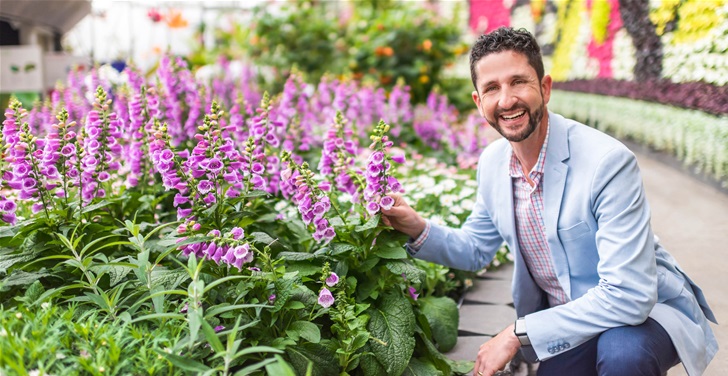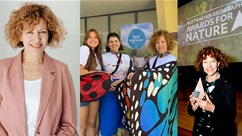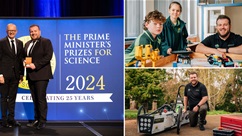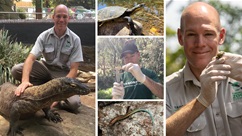KZ: Hi John! What experience did you have before your current role?
J: I grew up in the leafy suburbs of Brisbane, where I went to school and university. I had a couple of volunteer and casual jobs during my undergraduate studies, including working on flower farms and a wholesale tree production nursery, and as a laboratory technician at CSIRO Tropical Agriculture where I was involved in researching a range of agricultural and horticultural crops including rice, tomatoes, soybeans and Macadamia nuts. I loved the Macadamia laboratory because there were always lots of nuts to eat as a by-product of the research! When I moved to Sydney, I commenced postgraduate studies working on ornamental crops (plants grown for flowers or foliage). I’ve now worked for the Royal Botanic Garden Sydney for more than 20 years, and worked my way up from laboratory manager to the Director of Horticulture.
KZ: What inspired your decision to become a horticultural scientist?
J: When I was a small child, I loved being in the garden with my parents and had a general love of nature. Some of my earliest memories are getting my hands dirty planting seedlings and watching them grow, smelling flowers, chasing insects in the garden, and picking tomatoes from my grandparents’ backyard. That interest in plants never left me, and when faced with a future career I was torn between horticulture or agriculture. I figured plants didn’t kick or bite, so they seemed the safer option! I later learned that aside from all the wonderful things plants do (like producing oxygen, food, fibre and medicine), some plants can cut, sting, prick, irritate, and cause hayfever – so maybe I didn’t take the safer bet after all.
KZ: What are the best and worst parts of your job?
J: My incredibly team of horticulturists look after three wonderful and beautiful botanic gardens, the Royal Botanic Garden Sydney (including the Domain), the Australian Botanic Garden Mount Annan and the Blue Mountains Botanic Garden Mount Tomah. Collectively these greenspaces cover more than 730 hectares displaying more than 17,000 species of plants from over 72% of the world’s countries. They are collectively visited by more than 11,000,000 people per year. The best part of my job is exploring each garden and finding new plants I’ve never seen before or watching our visitors enjoyment at exploring, learning or relaxing. Given my team works in an outdoor setting our Garden’s are very much influenced by environmental conditions so rain, hail, flood, wind and fire can do a lot of damage in a short amount of time. Fortunately, garden’s can be regrown and with a little patience, time and love our horticulturists can fix just about any challenge thrown their way.
KZ: Did you study any subjects or courses, take part in any activities, or have any hobbies as a child (younger than 13) that you feel helped with your career, or gave you skills that you use at work?
J: My favourite subject at high school was biology where it cemented my interest in nature and opened my eyes to the world around me. I also took an interest in photography, particularly macro (close-up) images, that led to buying a microscope and exploring the phenomenal microscopic details of plants which furthered my curiosity in nature.
KZ: What would K-Zoners be surprised to hear about your job?
J: Our botanic gardens hold incredibly rare plants that are technically extinct and no longer exist in the wild. Without botanic gardens we would have lost these plants from the planet forever, just like the Tasmanian Tiger.
KZ: What would you say to K-Zoners who want to work in a similar role?
J: Find something that you are good at and enjoy doing and work out how to make that your career. If you are passionate about something you are more likely to be successful at it and the job will be so much more fun!
Want to read more of our interview with John Siemon? Grab the June 2022 'Worlds Collide' issue, out now!










Comment Now!